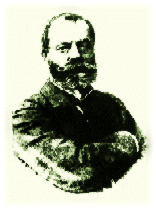Search Results
Alexander Graham Bell was awarded the first U.S. patent for the invention of the telephone in 1876. Elisha Gray, 1876, designed a telephone using a water microphone in Highland Park, Illinois.
There were disputes as to which patient was the original invention, both patients were approved and formed within two hours on the same day. (Wikipedia)

There were disputes as to which patient was the original invention, both patients were approved and formed within two hours on the same day. (Wikipedia)

By Elisha Gray and Alexander Graham Bell - Photo illustration based on Alexander Graham Bell's notebooks and a patent caveat filed by Elisha Gray. Featured in Seth Schulman's book en:The Telephone Gambit and his notes at [1], Public Domain, Link
Tivadar Puskás proposed the telephone switchboard exchange in 1876. Tivadar Puskás de Ditró was a Hungarian inventor, telephone pioneer, and inventor of the telephone exchange. He was also the founder of Telefon Hírmondó. Wikipedia
A microphone, colloquially nicknamed mic or mike (/ˈmaɪk/),[1] is a transducer that converts sound into an electrical signal.
Other minor variations and improvements were made to the liquid microphone by Majoranna, Chambers, Vanni, Sykes, and Elisha Gray.
1876 Liquid Transmitter
 The first articulate sentence ever spoken over an electric telephone was uttered over the liquid transmitter on March 10, 1876. The historic words, "Mr. Watson, come here; I want you." were uttered by Bell after he spilled some of the acid which was part of the transmission apparatus. This set was found by the present owner in the basement of the Bell Telephone Building in Eugene, Oregon.
The first articulate sentence ever spoken over an electric telephone was uttered over the liquid transmitter on March 10, 1876. The historic words, "Mr. Watson, come here; I want you." were uttered by Bell after he spilled some of the acid which was part of the transmission apparatus. This set was found by the present owner in the basement of the Bell Telephone Building in Eugene, Oregon.
The Very First Telephone
1876 Liquid Transmitter
 The first articulate sentence ever spoken over an electric telephone was uttered over the liquid transmitter on March 10, 1876. The historic words, "Mr. Watson, come here; I want you." were uttered by Bell after he spilled some of the acid which was part of the transmission apparatus. This set was found by the present owner in the basement of the Bell Telephone Building in Eugene, Oregon.
The first articulate sentence ever spoken over an electric telephone was uttered over the liquid transmitter on March 10, 1876. The historic words, "Mr. Watson, come here; I want you." were uttered by Bell after he spilled some of the acid which was part of the transmission apparatus. This set was found by the present owner in the basement of the Bell Telephone Building in Eugene, Oregon.
Although the water microphone was commercially impractical, the variable resistance feature inspired Thomas Edison to experiment with dry carbon (graphite and amorphous) to provide the variable resistance. The Edison transmitter a carbon transmitter, is a type of microphone, a transducer that converts sound to an electrical audio signal. with later improvements it was used for more than 60 years.
From Microphones to the Ultrasonic Sensors of Today
Microphones are used in many applications such as telephones, hearing aids, public address systems for concert halls and public events, motion picture production, live and recorded audio engineering, sound recording, two-way radios, megaphones, radio and television broadcasting, and in computers for recording voice, speech recognition, VoIP, and for non-acoustic purposes such as ultrasonic sensors or knock sensors.
Alexander Graham Bell was a professor of elocution at Boston University and tutor of deaf children while pursuing his own research into a method of telegraphy that could transmit multiple messages over a single wire simultaneously, a so-called "harmonic telegraph". Bell formed a partnership with two of his students' parents, including prominent Boston lawyer Gardiner Hubbard, to help fund his research in exchange for shares of any future profits.[1]
Inventors who worked on the acoustic telegraph included Charles Bourseul, Thomas Edison, Elisha Gray, and Alexander Graham Bell. Their efforts to develop acoustic telegraphy, in order to reduce the cost of telegraph service, led to the invention of the telephone.[1]
Tivadar Puskás proposed the telephone switchboard exchange in 1876. Tivadar Puskás de Ditró was a Hungarian inventor, telephone pioneer, and inventor of the telephone exchange. He was also the founder of Telefon Hírmondó. Wikipedia

TIVADAR PUSKÁS (1844 - 1893)
|
Relays originated with telegraphy as electromechanical devices used to regenerate telegraph signals.
There are several different types of repeaters; a telephone repeater is an amplifier in a telephone line, an optical repeater is an optoelectronic circuit that amplifies the light beam in an optical fiber cable; and a radio repeater is a radio receiver and transmitter that retransmits a radio signal.
This vector graphics image was created with Adobe Illustrator. - Own work, Public Domain, Link
In 1885, Michael Pupin at Columbia University taught mathematical physics and electromechanics until 1931.[5] Michael I. Pupin was a Serbian American physicist and physical chemist.
Pupin is best known for his numerous patents, including a means of greatly extending the range of long-distance telephone communication by placing loading coils (of wire) at predetermined intervals along the transmitting wire (known as "pupinization"). Pupin was a founding member of National Advisory Committee for Aeronautics (NACA) on 3 March 1915, which later became NASA.[5]
|
|
- Get link
- X
- Other Apps
- Get link
- X
- Other Apps



Comments
Post a Comment
leave me a request or comment. Contact me at lizfrazierphotoart@gmail.com. Please give 10 days for a response.